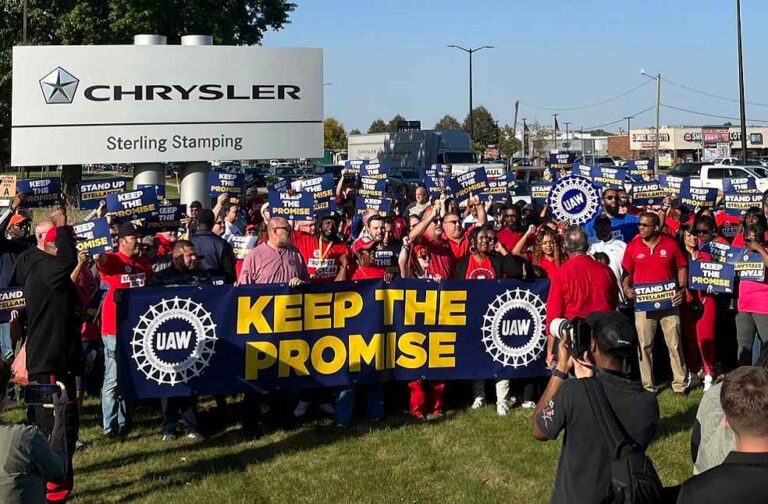For the first time in two decades, Italian autoworkers staged a national strike on Friday, protesting across the heart of Rome. The strike, which saw tens of thousands of workers from the country’s troubled automotive sector march through the capital, highlighted concerns over deteriorating work conditions and job security. The workers carried banners and waved union flags, calling for immediate government intervention to safeguard their industry.
Riccardo Falcetta, a representative from the UIL metalworker union in Bari, expressed the workers’ frustrations: “We are working one to two days a week when it goes well. So, what we are saying today is that the (ecological) transition cannot be exclusively paid for by the workers.”

Italy’s three largest unions are urging the government to take action to protect jobs and revive the country’s auto industry, focusing particularly on global automaker Stellantis. The company, formed in 2021 through the merger of Fiat-Chrysler and PSA Peugeot, has been under pressure to clarify its production plans amid financial challenges and increasing global competition.
Stellantis has faced criticism from Italy’s far-right government, which accuses the automaker of moving production to low-cost countries. Over the past 17 years, Stellantis has significantly reduced its Italian production by nearly 70%, and in the first half of 2024, it recorded sharp declines in output at most of its Italian plants.
CEO Carlos Tavares has pointed to EU carbon emission regulations as a key factor driving up production costs. He warned that these rising costs might force the company to shut down some assembly plants and potentially cut jobs, unless additional state incentives are provided to stimulate demand for electric vehicles.

Stellantis, which manufactures Jeep and Chrysler vehicles, has been in the spotlight since issuing a profit warning. The company expects to end 2024 with a loss of up to €10 billion. Tavares has also faced backlash from U.S. dealers and the United Auto Workers union due to the company’s financial struggles, exacerbated by an overstock of high-priced vehicles on dealer lots.
In response to these challenges, Stellantis has taken steps to reduce costs, including delaying factory openings, laying off union workers, and offering buyouts to salaried employees.
As part of its long-term strategy, Stellantis announced in September that it is searching for a successor to the 66-year-old Tavares, whose five-year contract is nearing its expiration. However, the company has hinted that he may remain in his role beyond the contract’s end.
DON’T MISS | Ramaphosa Reaffirms South Africa’s Commitment to Automotive Industry Transition





